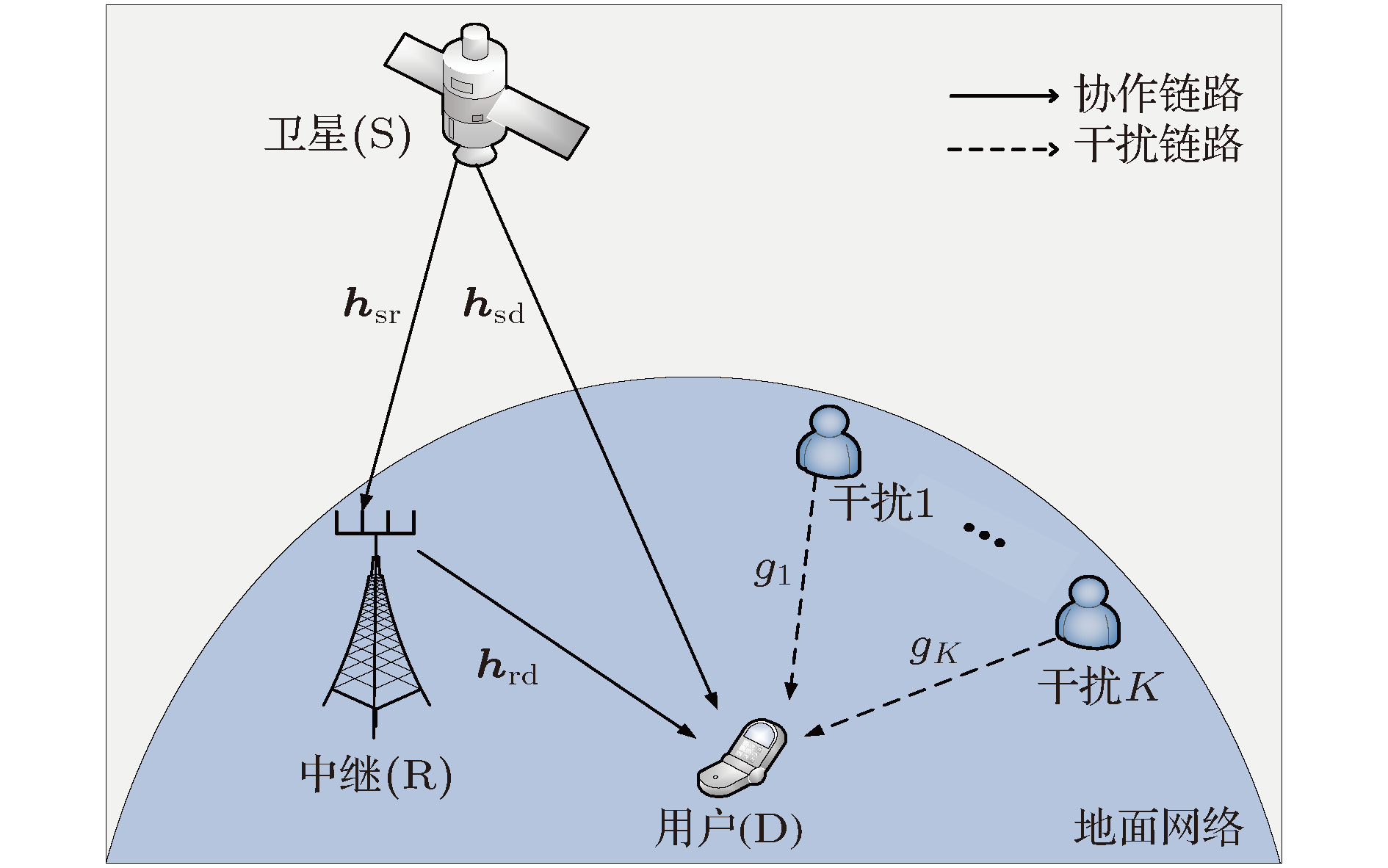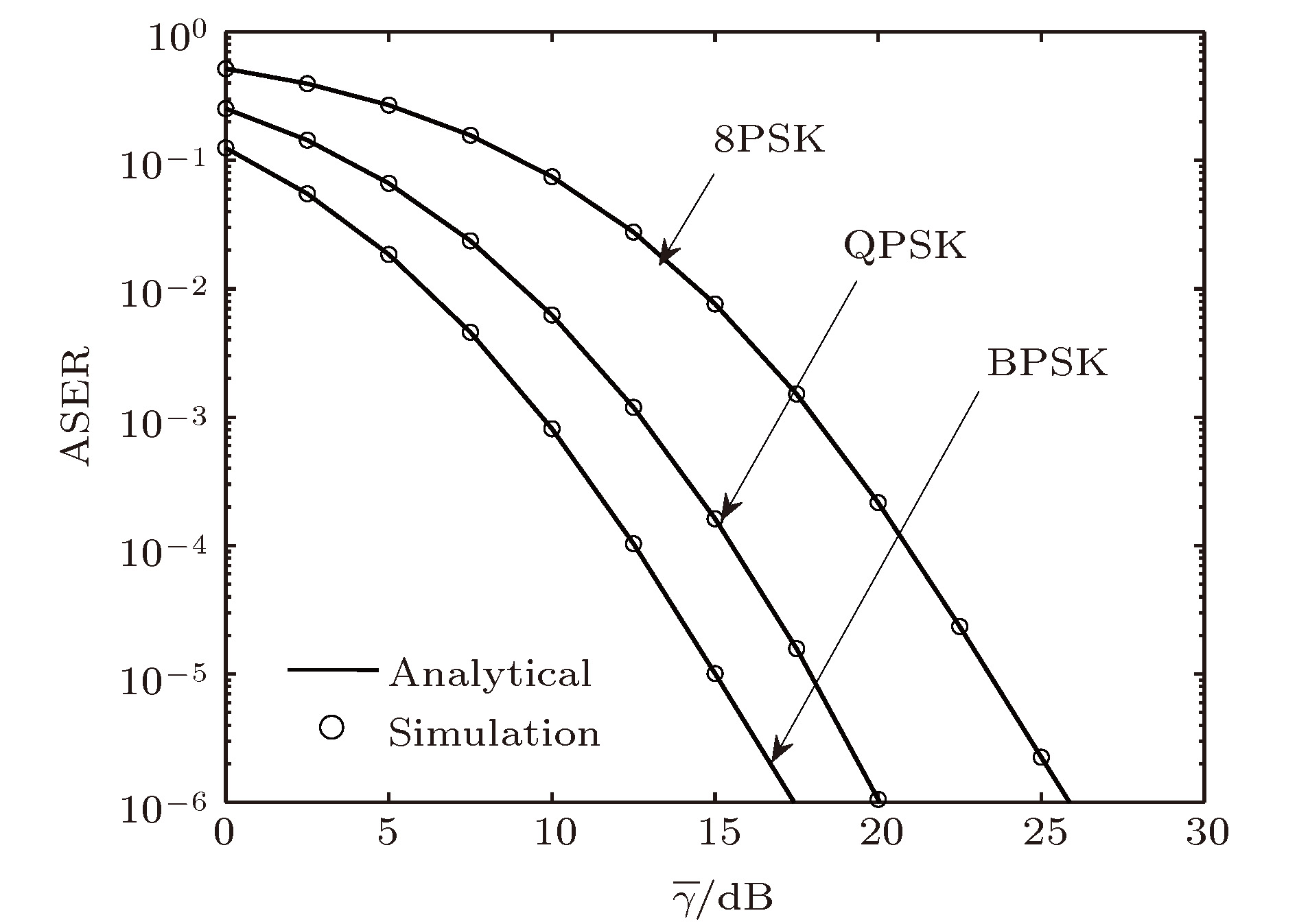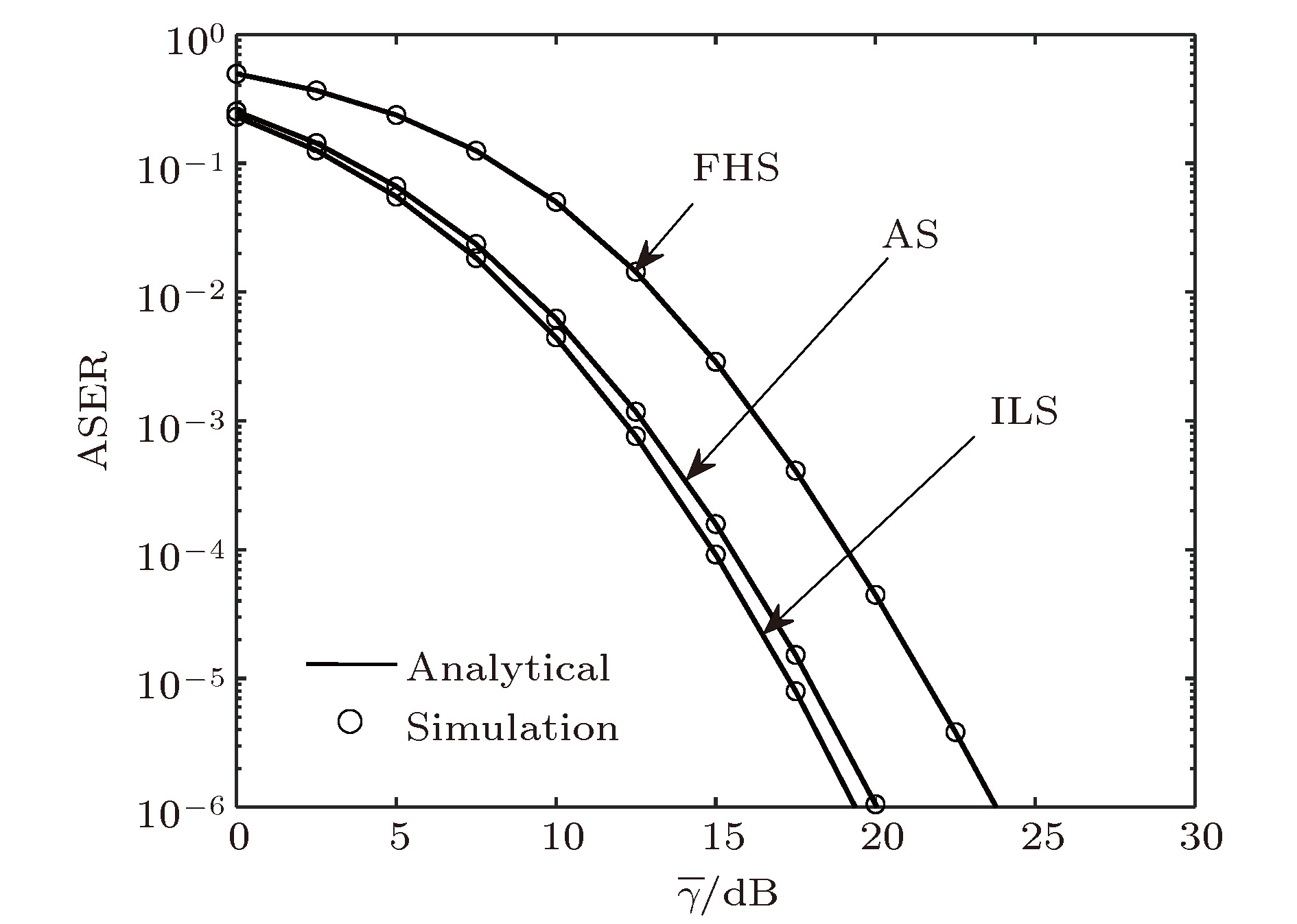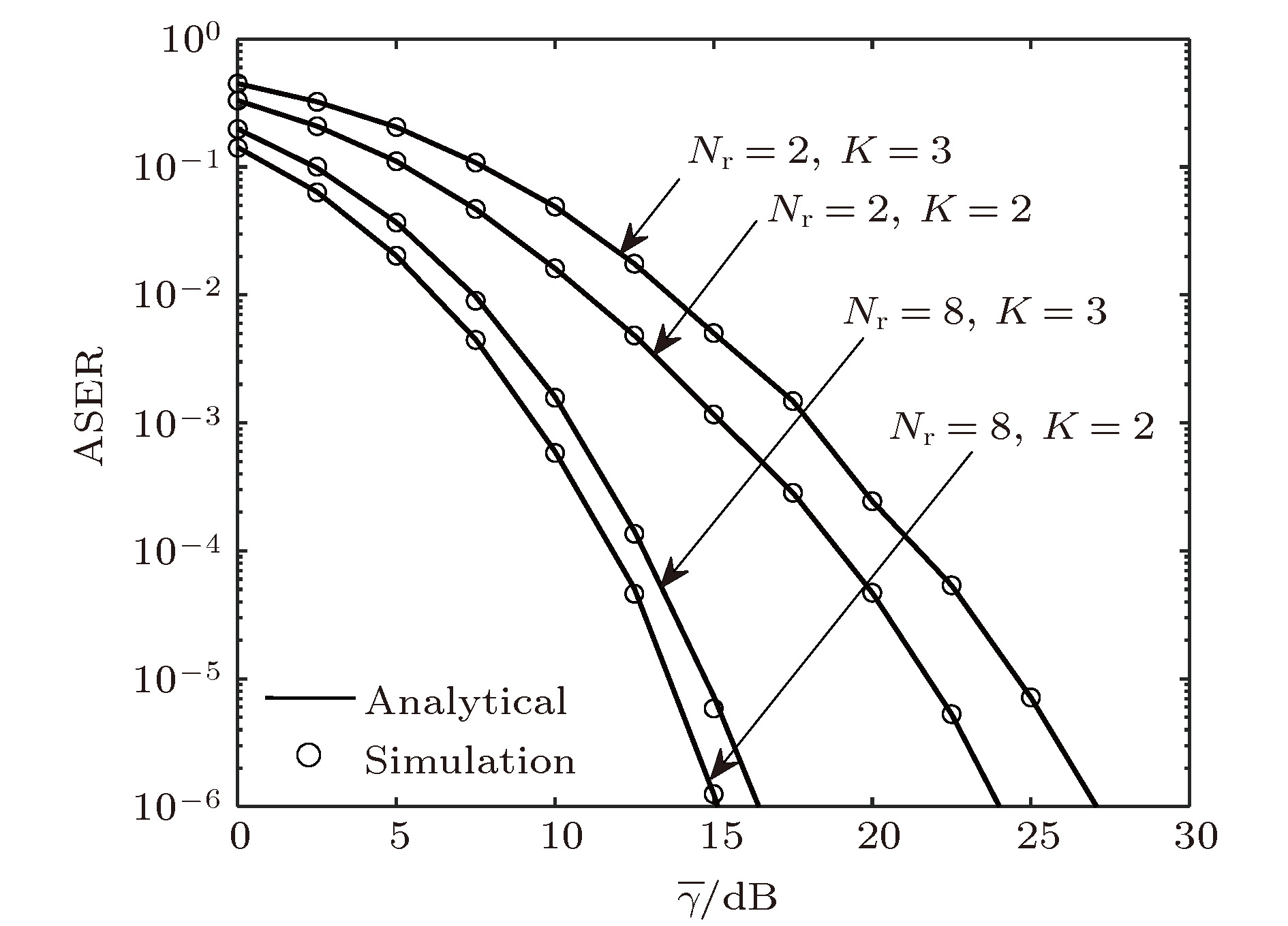-
As an indispensable method of constructing ubiquitous communication network, satellite communication technology has received significant attention in both industrial and academic areas recently. In this paper we investigate the performance of an integrated satellite-terrestrial cooperative network in the presence of co-channel interference, which consists of a satellite source having a single antenna, a terrestrial relay equipped with multiple antennas to assist satellite signal transmission, and a single-antenna user corrupted by multiple co-channel interference. On the assumption that the user receives the signals from direct link and relaying link with decode-and-forward protocol, the output signal-to-interference-plus-noise ratio of the user with the maximal ratio combining scheme is firstly obtained. Then, according to the Meijer-G function, we derive the moment generating function of the destination and the relay, where the satellite links are assumed to experience Shadowing-Rician fading while the terrestrial links undergo Rayleigh fading, and the analytical average symbol error rate expression for the considered system is obtained. Finally, the simulation results demonstrate the effectiveness of the theoretical analysis and reveal theinfluences of antenna number, interference number, and modulation schemes on the system performance. Therefore, our work provides useful guidelines for the engineers in designing the integrated satellite-terrestrial cooperative networks for future satellite mobile communication.
-
Keywords:
- satellite communication /
- cooperative transmission /
- decode-and-forward /
- average symbol error rate
[1] 易克初, 李怡, 孙晨华, 南春国 2015 通信学报 36 6
 Google Scholar
Google Scholar
Yi K C, Li Y, Sun C H, Nan C G 2015 J. Commun. 36 6
 Google Scholar
Google Scholar
[2] 王树志, 朱光武, 白伟华 2015 物理学报 64 089301
 Google Scholar
Google Scholar
Wang S Z, Zhu G W, Bai W H 2015 Acta Phys. Sin. 64 089301
 Google Scholar
Google Scholar
[3] 刘桢, 张嘉怡, 陆明泉, 黄洁, 赵拥军 2017 物理学报 66 129101
 Google Scholar
Google Scholar
Liu Z, Zhang J Y, Lu M Q, Huang J, Zhao Y J 2017 Acta Phys. Sin. 66 129101
 Google Scholar
Google Scholar
[4] 安豪, 严卫, 赵现斌,等 2013 物理学报 62 199201
 Google Scholar
Google Scholar
An H, Yan W, Zhao X B, et al. 2013 Acta Phys. Sin. 62 199201
 Google Scholar
Google Scholar
[5] Pecorella T, Ronga L S, Chiti F 2015 IEEE Commun. Mag. 53 170
 Google Scholar
Google Scholar
[6] Sakarellos V K, Kourogiorgas C, Panagopoulos A K 2014 Wireless Personal Commun. 79 1471
 Google Scholar
Google Scholar
[7] Bhatnagar M R, Arti M K 2013 IEEE Commun. Lett. 17 1912
 Google Scholar
Google Scholar
[8] Sreng S, Escrig B, Boucheret M L 2013 IEEE Trans. Wireless Commun. 12 1310
 Google Scholar
Google Scholar
[9] Zhao Y, Chen H, Xie L, Wang K 2018 IET Commun. 12 1342
 Google Scholar
Google Scholar
[10] An K, Lin M, Liang T 2015 IEEE Commun. Lett. 19 1722
 Google Scholar
Google Scholar
[11] Zheng K, Zhao L, Mei J, Shao B, Xiang W, Hanzo L 2015 IEEE Commun. Surv. Tutor. 17 1738
 Google Scholar
Google Scholar
[12] Yona Y, Feder M 2014 Information Theory and Applications Workshop (ITA) San Diego, CA, USA, Feburary 9−14, 2014
[13] An K, Ouyang J, Lin M, Liang T 2015 IEEE Commun. Lett. 19 1157
 Google Scholar
Google Scholar
[14] Arti M K, Bhatnagar M R 2014 IEEE Commun. Lett. 18 483
 Google Scholar
Google Scholar
[15] An K, Lin M, Ouyang J, Huang Y, Zheng G 2014 IEEE Commun. Lett. 18 1947
 Google Scholar
Google Scholar
[16] Javed U, He D, Liu P 2016 Sensors 16 1236
 Google Scholar
Google Scholar
[17] Simon M, Alouini M 2005 Digital Communication over Fading Channels (New York: Wiley-IEEE Press) pp86, 87
[18] Abdi A, Lau W, Alouini M, Kaveh M 2003 IEEE Trans. Wireless Commun. 2 519
 Google Scholar
Google Scholar
[19] Gradshteyn I S, Ryzhik I M 2007 A Table of Integrals, Series, and Products 7th (Burlington: Academic Press) p337
[20] Proakis J G 2011 Digital Communications 4th (New York: McGraw-Hill) pp49−51
[21] Mckay M, Zanella A, Collings I, Chiani M 2009 IEEE Trans. Commun. 57 676
 Google Scholar
Google Scholar
[22] Annamalai A, Tellambura C 2001 IEEE Trans. Commun. 49 58
 Google Scholar
Google Scholar
-
表 1 LMS信道参数
Table 1. Channel parameters of LMS.
阴影类型 参数 b m Ω FHS 0.063 0.739 8.97 × 10–4 AS 0.126 10.1 0.835 ILS 0.158 19.4 1.29 -
[1] 易克初, 李怡, 孙晨华, 南春国 2015 通信学报 36 6
 Google Scholar
Google Scholar
Yi K C, Li Y, Sun C H, Nan C G 2015 J. Commun. 36 6
 Google Scholar
Google Scholar
[2] 王树志, 朱光武, 白伟华 2015 物理学报 64 089301
 Google Scholar
Google Scholar
Wang S Z, Zhu G W, Bai W H 2015 Acta Phys. Sin. 64 089301
 Google Scholar
Google Scholar
[3] 刘桢, 张嘉怡, 陆明泉, 黄洁, 赵拥军 2017 物理学报 66 129101
 Google Scholar
Google Scholar
Liu Z, Zhang J Y, Lu M Q, Huang J, Zhao Y J 2017 Acta Phys. Sin. 66 129101
 Google Scholar
Google Scholar
[4] 安豪, 严卫, 赵现斌,等 2013 物理学报 62 199201
 Google Scholar
Google Scholar
An H, Yan W, Zhao X B, et al. 2013 Acta Phys. Sin. 62 199201
 Google Scholar
Google Scholar
[5] Pecorella T, Ronga L S, Chiti F 2015 IEEE Commun. Mag. 53 170
 Google Scholar
Google Scholar
[6] Sakarellos V K, Kourogiorgas C, Panagopoulos A K 2014 Wireless Personal Commun. 79 1471
 Google Scholar
Google Scholar
[7] Bhatnagar M R, Arti M K 2013 IEEE Commun. Lett. 17 1912
 Google Scholar
Google Scholar
[8] Sreng S, Escrig B, Boucheret M L 2013 IEEE Trans. Wireless Commun. 12 1310
 Google Scholar
Google Scholar
[9] Zhao Y, Chen H, Xie L, Wang K 2018 IET Commun. 12 1342
 Google Scholar
Google Scholar
[10] An K, Lin M, Liang T 2015 IEEE Commun. Lett. 19 1722
 Google Scholar
Google Scholar
[11] Zheng K, Zhao L, Mei J, Shao B, Xiang W, Hanzo L 2015 IEEE Commun. Surv. Tutor. 17 1738
 Google Scholar
Google Scholar
[12] Yona Y, Feder M 2014 Information Theory and Applications Workshop (ITA) San Diego, CA, USA, Feburary 9−14, 2014
[13] An K, Ouyang J, Lin M, Liang T 2015 IEEE Commun. Lett. 19 1157
 Google Scholar
Google Scholar
[14] Arti M K, Bhatnagar M R 2014 IEEE Commun. Lett. 18 483
 Google Scholar
Google Scholar
[15] An K, Lin M, Ouyang J, Huang Y, Zheng G 2014 IEEE Commun. Lett. 18 1947
 Google Scholar
Google Scholar
[16] Javed U, He D, Liu P 2016 Sensors 16 1236
 Google Scholar
Google Scholar
[17] Simon M, Alouini M 2005 Digital Communication over Fading Channels (New York: Wiley-IEEE Press) pp86, 87
[18] Abdi A, Lau W, Alouini M, Kaveh M 2003 IEEE Trans. Wireless Commun. 2 519
 Google Scholar
Google Scholar
[19] Gradshteyn I S, Ryzhik I M 2007 A Table of Integrals, Series, and Products 7th (Burlington: Academic Press) p337
[20] Proakis J G 2011 Digital Communications 4th (New York: McGraw-Hill) pp49−51
[21] Mckay M, Zanella A, Collings I, Chiani M 2009 IEEE Trans. Commun. 57 676
 Google Scholar
Google Scholar
[22] Annamalai A, Tellambura C 2001 IEEE Trans. Commun. 49 58
 Google Scholar
Google Scholar
Catalog
Metrics
- Abstract views: 22009
- PDF Downloads: 60
- Cited By: 0















 DownLoad:
DownLoad:



